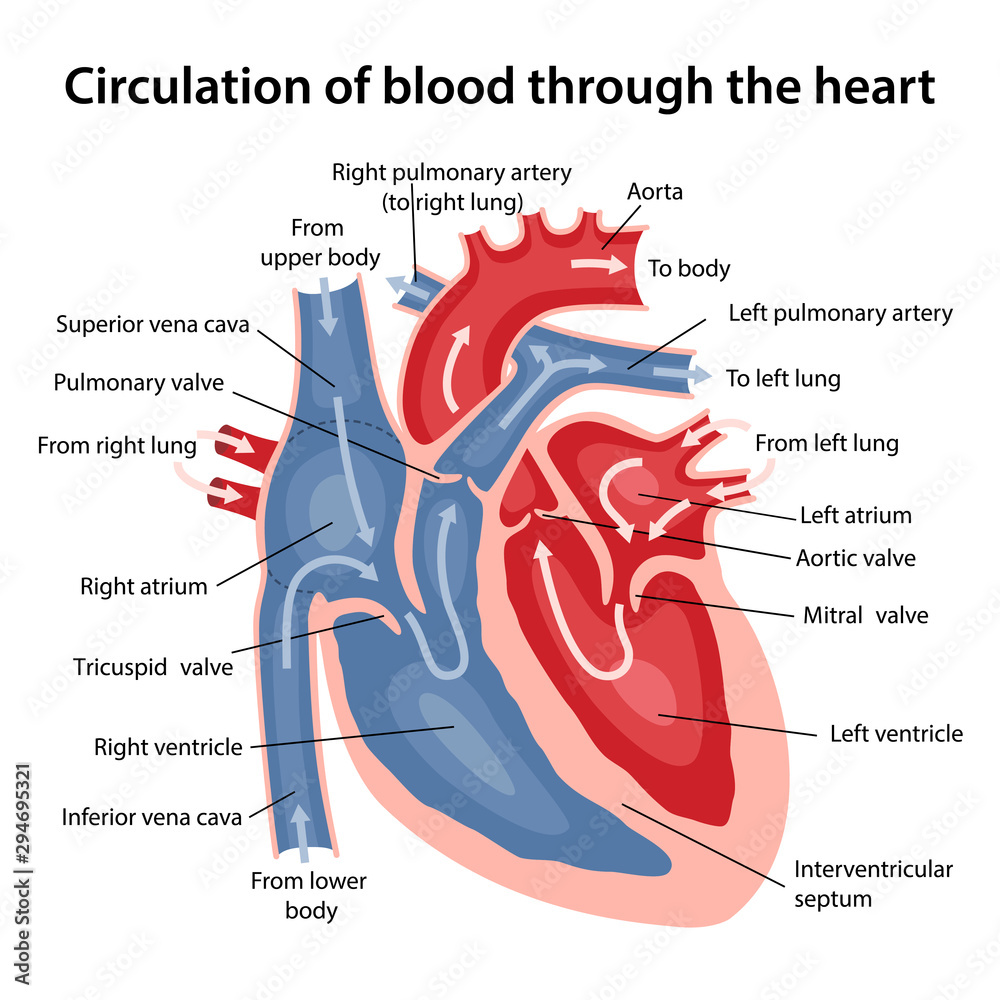Hemodynamics 1
Hemodynamics: Fundamentals and Calculations
Learning Objectives:
- Apply basic hemodynamic equations to calculate cardiac output and vascular resistance.
- Explain how local resistance is determined and how it contributes to systemic vascular resistance.

Cardiac Output and Blood Flow
Heart Pumps Two Circulations
The heart is a pump that drives two circulations: the pulmonary and systemic circulations. The left and right ventricles pump the same volume of blood per minute (~70 mL/beat at ~70 beats/min), but they operate under different pressures. The left ventricle typically pumps at around 100 mmHg, while the right ventricle pumps at around 10 mmHg.
Cardiac Output (CO)Cardiac output is a measure of the volume of blood the heart pumps per unit time. It can be determined using the equation:
CO = SV x HR
Where CO is cardiac output, SV is stroke volume, and HR is heart rate. For example, with a stroke volume of 80 mL/beat and a heart rate of 70 beats/min, the cardiac output would be:
80 mL/beat x 70 beats/min = 5600 mL/min = 5.6 L/min
The Cardiac Index (CI) normalizes the cardiac output to body surface area:
CI = CO / body surface area
For example, if the body surface area is 1.9 m², the cardiac index would be:
CI = 5 L/min / 1.9 m² ≈ 2.6 L/min/m²
/Cardiac-Output-and-Cardiac-Index-%E2%80%93-What-s-the-Diff/Cardiac-Output.png.aspx?lang=en-US)
Blood Flow, Pressure, and Resistance
Equation for Blood Flow
Blood flow through the body is driven by a pressure gradient (ΔP) against vascular resistance (R). This relationship is expressed as:
Q = ΔP / R
Where Q is the volumetric blood flow (L/min), ΔP is the pressure difference (mmHg), and R is the vascular resistance [mmHg/(L/min)].
Systemic Circulation
- Flow (Q) is equivalent to the cardiac output (CO).
- The pressure difference (ΔP) is the mean arterial pressure (MAP) minus the right atrial pressure (RAP). Typically, ΔP ≈ MAP since RAP is usually low.
- The resistance (R) is the systemic vascular resistance (SVR).
Thus, for systemic circulation, the equation becomes:
``` CO = MAP / SVR
SVR = MAP / CO ```
Pulmonary Circulation
- Flow (Q) is equivalent to the cardiac output (CO).
- The pressure difference (ΔP) is the pulmonary arterial pressure (PAP) minus the pulmonary capillary wedge pressure (PCWP, which approximates LAP).
- The resistance (R) is the pulmonary vascular resistance (PVR).
Thus, for pulmonary circulation, the equation becomes:
``` CO = (PAP - PCWP) / PVR
PVR = (PAP - PCWP) / CO ```
Pressure can be measured using catheters, providing values such as aortic pressure, right atrial pressure, etc.

Compliance and Distensibility
- Compliance is defined as the change in volume (ΔV) per change in pressure (ΔP):
Compliance = ΔV / ΔP
- Distensibility is the compliance normalized by volume, indicating how easily a vessel can stretch relative to its size.
- Veins are about 24 times more compliant than arteries, storing a significant portion of blood volume (around 60%), and impacting cardiac output by their ability to hold and release blood efficiently.

Resistance in the Vascular System
- Resistance (R) in a vessel is affected by the vessel's length (L), viscosity of blood (η), and radius (r). The relationship can be given as:
R = 8Lη / (πr^4)
- Smaller vessels have higher resistance because resistance is inversely proportional to the fourth power of the radius (r):
Resistance ∝ 1/r^4
- Organs in Parallel: When vascular beds are arranged in parallel, the total resistance (R_total) is less than the individual resistances:
1/R_total = 1/R1 + 1/R2 + ... + 1/Rn

Baroreceptors and Chemoreceptors
Baroreceptors
Baroreceptors in the aortic arch and carotid sinus detect changes in blood pressure and send signals to the medulla to adjust sympathetic and parasympathetic output: - Reduced pressure decreases baroreceptor firing, increasing sympathetic and decreasing parasympathetic activity to raise blood pressure. - Increased pressure increases baroreceptor firing, raising parasympathetic and decreasing sympathetic activity to lower blood pressure.
Chemoreceptors
Peripheral and central chemoreceptors respond to changes in blood oxygen (O2), carbon dioxide (CO2), and pH levels: - Peripheral chemoreceptors are located in the carotid and aortic bodies, activated by decreased O2 (<60 mmHg), increased CO2, and decreased pH. - Central chemoreceptors, located in the medulla, respond to changes in the pH and CO2 levels of brain interstitial fluid, indirectly influenced by arterial CO2.
